History

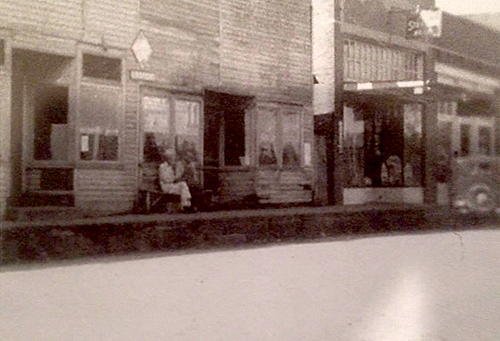
Algood, Tennessee is located about eighty-five (85) miles East of Nashville, One hundred (100) miles West of Knoxville, and one hundred (100) miles Northwest of Chattanooga. Algood’s southwestern city limits is separated from Cookeville’s northeastern boundary by state highway 111. Algood joins Cookeville, Baxter, and Monterey as population centers of Putnam County. First incorporated in 1901, Algood was the site of homes of notable settlers from the early 19th Century. Now in the 21st Century, it is experiencing a burst of growth unlike any in the past 80 years.
Prior to 1880, most of the land on the First Plateau of the Cumberland Mountains in the heart of Tennessee was in timber, and there was an abundance of wildlife-wild boar, deer, rabbits, squirrels, and others. The land which became Algood was covered with sage grass, blackberry briars, and virgin timber. The earliest record of the town that became Algood is June 24, 1820, when the State of Tennessee granted to Henry McKinney Sixty (60) Acres in what was Jackson County. On May 6, 1842, the state granted to Mr. McKinney forty-eight (48) acres in Overton County. These lands were included in Putnam County when it was formed from other counties.
Railroads & Other Transportation
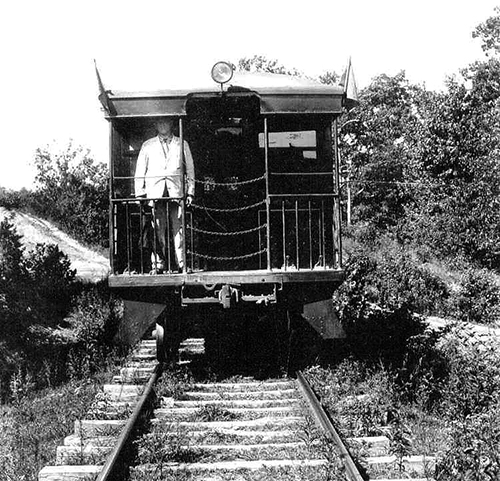 RAIL Prior to 1890, the only means of transportation in the Algood area was by horseback or by other horse-drawn conveyances. This began to change with the coming of the railroad. On March 21, 1884, Alexander Crawford of Pennsylvania chartered the Nashville and Knoxville Railroad ( N&K). He secured permission to connect the N&K with the NC&StL at Lebanon. He then let the contract for the laying of track from Lebanon to Cookeville. Without modern day equipment, all work was done by hand. The rails finally reached Cookeville on July 10, 1890. The first passenger train arrived in Cookeville probably on that same day. The railroad passed through Algood and finally reached Monterey in 1893. The N&K put down 39 miles of track in Putnam County. The Crawfords continue to own the N&K until 1902.
RAIL Prior to 1890, the only means of transportation in the Algood area was by horseback or by other horse-drawn conveyances. This began to change with the coming of the railroad. On March 21, 1884, Alexander Crawford of Pennsylvania chartered the Nashville and Knoxville Railroad ( N&K). He secured permission to connect the N&K with the NC&StL at Lebanon. He then let the contract for the laying of track from Lebanon to Cookeville. Without modern day equipment, all work was done by hand. The rails finally reached Cookeville on July 10, 1890. The first passenger train arrived in Cookeville probably on that same day. The railroad passed through Algood and finally reached Monterey in 1893. The N&K put down 39 miles of track in Putnam County. The Crawfords continue to own the N&K until 1902.
In 1893, Jere Baxter chartered the Tennessee Central. He planned to build a railroad from the Tennessee River in West Tennessee from Harriman where it would connect to the Southern Railroad. Such a line would provide the Upper Cumberland area with markets throughout the East. The L&N and the NC&StL had a monopoly on tracks out of Nashville. Baxter was unable to acquire rails west of Nashville or between Nashville and Lebanon. He eventually built the TC’s own track on that stretch. Baxter was more successful on the eastern end of the line. He began building his road from Monterey to Emory Gap, near Harriman, in 1890, and by 1901 to Knoxville. In 1902, Baxter bought the N&K. Eventually TC compromised 251 miles of rail, connecting with Southern at Harriman; the Illinois Central at Hopkinsville; and the L&N at Clarksville.
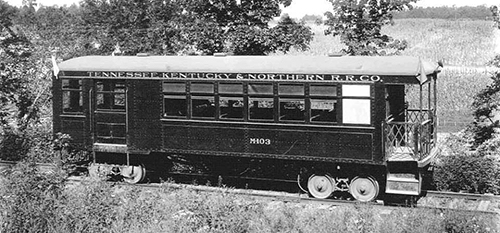
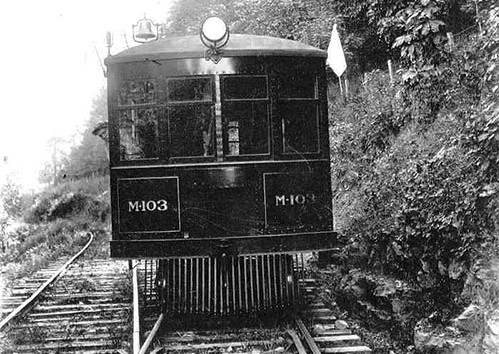
During the late 1940’s and early 1950’s, Algood was served by the Short Way Bus Line. This line ran from Sparta to Somerset, Kentucky. We are uncertain as to the number of daily trips made through Algood by this line. Other bus lines that serviced the area were Greyhound and Trailways. Neither of these bus lines came through Algood, but both served the area at Cookeville. Another bus line was a local transit line that served Algood, Cookeville, and Baxter during the late 1940’s and early 1950’s. This line, owned by a Mr. Clarence Carrington and Street Brown, made several trips daily to serve these towns. The cost to ride the bus between Algood and Cookeville was 15 cents. The bus line operated for only a few years.
Algood never had access to transportation by air without going to another city. The Putnam County Municipal Airport was located nearby. However, it was a small airport and could be used primarily by small personal aircraft. Several years ago, the cities of Cookeville and Sparta, combined with Putnam and White Counties, opened a new regional airport in White County near the the White and Putnam County line. The runway has been lengthened and can now accommodate business aircrafts including jets.
EDUCATION
By 1869, when Tennessee educators first kept systematic records, Putnam County had thirty-seven (37) public schools for whites and three (3) for blacks. In 1873, the Tennessee General Assembly enacted a public school law that marked a new era in Tennessee’s educational development. The measure required the Governor to appoint a state superintendent of public education and county courts to choose county superintendents and three directors in each civil district to deal with education. Having a school was a priority for the community of Algood for several years before it was incorporated. In 1892, trustees of the Algood Station School House purchased a lot from Mrs. Nancy Algood, and a one-room school house was constructed on the property at Wall and Second Streets. In 1903 this building was purchased by the Algood United Methodist Church and moved to their lot where it was connected to the church sanctuary and became their fellowship hall. The lot was also sold.
On December 30, 1902, a seven-and-one-half acre lot was purchased on Main Street in the northeastern part of town. The lot was purchased from James Thomas Pointer for the sum of $315.35. A white frame school building with three (3) wings was constructed on the new lot. The basic subjects were taught-no music or art programs were available in the early years. The frame building provided educational facilities for Algood until 1922, when it was raised and a new brick building was constructed at a cost of $30,000.00. The first brick building was much smaller than it is today. In 1915, the Putnam County School Board located a two(2) year high school in Algood. In 1922, it became a four (4) year high school with the first four (4) year high school graduates receiving their diplomas in 1924. A wooden building, detached from the brick building, was used for a gymnasium until the late 1930’s. At that time the new building was torn down and a new brick gymnasium with a full sized basement was added to the school building. The basement was used by the Agriculture and Home Economics Departments. Since then, the school has been remodeled and enlarged several times. The school did not have indoor restrooms until the late 1940’s. Until then, outdoor toilets were used. Cinder paths were constructed using the cinders from the coal-fired boiler used for heating the building. A volleyball court was located on a flat area between the boys and girls toilets. Swings and see-saws were situated behind the volleyball court. Usually there were games of marbles and horseshoe pitching in the same area.
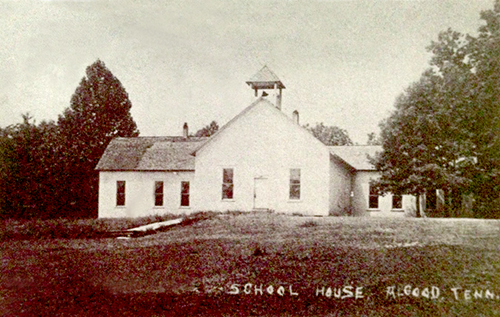

Due to segregation then in effect, black students in Algood had to go to Cookeville to attend Darwin High School if they wished to pursue more than an elementary school education. In January 1963, Darwin High School burned. Faced with the choice of rebuilding the school or integrating the county school system. In the fall of 1963, Putnam County Schools became integrated. Algood’s High School program was discontinued in 1966. The students in grades 10th, 11th, and 12th attended Putnam County Senior High School in Cookeville. From 1966 until 1997 the Algood school encompassed grades K-9. From 1997 until the spring of 2001, the school served approximately 400 students in grades K-6. In the Fall of 2001, the new K-8 Algood School on Dry Valley Road became home to 950 students and a substantial faculty: Forty (40) classroom teachers, two (2) P.E. teachers, one (1) music teacher, one (1) band teacher, one (1) art teacher, one (1) librarian, one (1) speech therapist, one (1) part-time learning ELL (English Language Learning) teacher, one (1) part-time teacher of the gifted, and one (1) teacher for the hearing impaired students. That was quite a change from the days of when each grade had only one teacher. Probably due to its K-8 grade structure, Algood School has become the most popular elementary school in Putnam County.
Algood School has produced a large number of graduates who have excelled and made a name for themselves in government, business, education, professional services, and civic activities
CHURCHES
The citizens of Algood have always been a people of strong faith. In 1941, the community had five (5) churches, which included the denominations of Church of Christ, Methodists, and Presbyterian. In 2006, there were eleven (11) protestant churches and one (1) hispanic protestant non-denominational Church. List of Churches: Algood United Methodist Church, Burton’s Chapel United Methodist Church, Algood Church of Christ, Algood Cumberland Presbyterian Church, Pentecostal Temple Church of God in Christ, Trinity Assembly, The Church on the Hill, Algood Church of God, Algood First Free Will Baptist Church, Iglesia De JesuChisto (The Hispanic Church).
CEMETERIES
There are three (3) cemeteries located in Algood. All three (3) apparently have been in use for more than a century.The Algood City Cemetery, The Algood Cemetery, and the Phillips Cemetery.
HEALTH SERVICES
Apparently the first doctor to practice medicine in Algood was Dr. James A. Reace, who was born in 1857 and died in 1909. For a century, Dr. Moore looked after the health needs of Algood: First Dr. J.T. Moore, Sr., and then his son, Dr. J.T. Moore, Jr. Both preceded the age of intense specialization, and as general practitioners, they delivered babies, treated childhood diseases, pulled teeth, tended strains and breaks, and coped with all manner of ailments, from minor to severe. In 1957, Dr. J. Thomas Moore, Sr. (known as Dr. Tom) published his memoirs, which offer a unique vantage point on the community of Algood for more than five (5) decades. He could say in all honesty that he was born in a log house (1876) in the foothills of Putnam County. He once stated he knew everyone for 25-30 miles along the Calfkiller River. He took a large room with two (2) beds at the MCDaniel Hotel to serve as his home and office. During his lengthy career, Dr. Tom progressed from horseback to horse and buggy (or sleigh in wintertime) to automobile. But, as late as 1950, he could gain access to some of his patients only by driving to a certain point and then riding a horse the remainder of the way because of poor road conditions. In 1900, he bought a half block in the center of Algood and built a two-room office. It served as his office and home because he even slept there until he built a house next door to the Methodist Church. In 1908 Dr. Tom formed a partnership with Dr. W.A. Howard of Livingston. In 1909 a tornado came through and moved the office six inches off its foundation. Tuberculosis, typhoid, diptheria, pertussis, tetanus, malaria, anemia, cancer and rabies were common among Dr. Tom’s patients. Unsanitary conditions contributed to some illnesses. The availability of aspirin around 1909 and the eventual development of immunizations, vaccines, and antibiotics were like gifts to the doctor and his patients.
Dr. J.T. Moore did not set out to become a doctor; he earned an engineering degree and then served in the Army Air Corps. He became a medical doctor in 1951. His patients called him Dr. Jack, and he and his father shared an office in Algood. Dr. Jack built a new clinic, a red brick building at 172 West Main Street in the early 1950’s. He remained there until his death in 1999. When he earned certification as a family practitioner in 1971, he became one of the first board-certified doctors in Putnam County.
Dr. J. A. Butler is another doctor who served the community for a large number of years, beginning sometime prior to 1920. His office was located just across Second Avenue from the building that Dr. Tom built for his practice.
Following the death of Dr. Jack, Algood was without the services of a medical doctor. After a few months, Dr. Herbert Smith rented the clinic where Dr. Jack had maintained his practice and began serving patients. However, he and the Moore family were unable to reach a mutually satisfactory agreement, and he closed the office after a few weeks. Since then, the citizens of Algood have had to seek medical treatment from physicians located in Cookeville.
DENTAL
Dental services have not always been available in Algood. Early in the twentieth century, a Dr. J. P. Terry had an office in Algood. He was here for only a short period of time before moving his practive to Cookeville. Dr. Tom Moore extracted teeth when no dentist was available.
Dr. Howard G. Smith opened a dental office in the late 1980’s. He stayed for several years before moving his practice to another location. In 2006, the dental office building is now utilized by Trinity Assembly.
Dr. Richard Heard, a native of Mississippi, opened a dental office in 2005 in the building that Dr. Jack Moore had built as a clinic. He continues to build his practice at this site, as of 2010.
NURSING HOME
Sometime during the late 1950’s, Edith and Eugene Masters established the first nursing home in Algood. They did so in their home located on West Main Street, just east of where the Wal-Mart is located now. In 1959, there were about eight (8) patients in his nursing home. The need for more space prompted the construction of a wing on the north side of the house. Additional expansion projects still did not meet the needs of patients requesting admission, but the Masters did not have the funds to build a new facility. Dr. Jack Moore and several doctors in the area joined with the Masters family on September 29, 1980 and constructed a new facility on Dry Valley Road. The facility was named the Masters Health Care Center. In 2006, the Masters Health Care Center can accommodate 175 patients.
PHARMACY
In either 1901 or 1902, the first drug store was opened in Algood. It was owned and operated by Allen Gaskill. In 1906, it was purchased by Howard Curtis. W. L. Swallows was at one time employed by a Mr. Cantrell. Later the Drug Store was owned and operated by Fred Moore, a brother of the pioneer Doctor, J. T. Moore, Sr. Fred Moore served the pharmaceutical needs of the community for several years until his retirement in 1959. The Drug Store was a favorite hangout for teenagers after school. They would stop by for a soft drink, ice cream, and play the jukebox while some might jitterbug to the music, or play the pinball machine, or talk about events, such as sports.
Fred Moore sold the Drug Store to Sam and Kathryn Coward in 1959. After operating the store in the old building for a few years, the Cowards built a new building for the business a few blocks west on Main Street. In 1977, they sold the Drug Store to Don Huff who continued to operate the store until November of 1997. At that time Super D Drugs purchased the business and closed the store. There has been no pharmacy on Algood until Wal-Mart opened a Super Store that includes a pharmacy. Algood Pharmacy in Algood is now owned by Brad Cross.
BANKS
In 1910, the Bank of Algood was established with $15,000 in capital and $2,000 of surplus. The original officers of the corporation were Henry T. Pointer, President; J. A. Keith and John A. Epperson, Vice-Presidents; and R. E. Bilbrey, cashier. Epperson was a businessman who began his Algood residency in about 1894. He and his wife later moved to Cookville in 1925. J.T. Moore was a medical doctor who started his practice in Algood in 1899.The Bank held a very successful infancy. By mid-November 1920, the banks balance sheet read: Total Assests of $190,149; Total Deposits of $147,335; and total loans and discounts of $131,002.
In 1920 there were a total of six (6) banks in operation in Putnam County. The three (3) largest of these were First National Bank and Citizens Bank of Cookeville and Bank of Monterey. By the late 1920’s many of the area banks were loaning out more money than they had taken in on deposit. When the stock market crashed in 1919, the worst depression in American History followed. Tennessee Banks, like those of other states were hit hard. From 1929 to 1934, a total of 106 Tennessee Banks went under. As a result the Bank of Algood failed in 1930. Soon after the failure of the Bank of Algood, the Baxter Bank & Trust Company closed. By the 1960’s, First National Bank of Cookeville competed fiercely with Citizens Bank, with both banks opening sleek, modern branches in suburban area of Putnam County, with the Algood Branch of Citizens Bank opening for business on July 2, 1960 in the same building that the old Bank of Algood occupied at 111 Main Street. Charles R. Miller served as C.E.O. of Citizens Bank at that time. In 1988, Citizens Bank was purchased by Union Planters Bank, however, the name did not change until 1997. Union Planters Bank later merged with and became known as Regions Bank on April 21, 2005. In the last quarter of 2006, regions Bank merged with AmSouth Bank and became known as Regions Financial. In the Fall of 2006, First National Bank of Tennessee and Jackson Bank & Trust both broke ground on new branch locations in Algood. The new Jackson Bank & Trust location is on West Main Street. First National Bank’s new Algood Office opened in 2007 at 330 W Main Street and Dry Valley Road.
BUSINESS & INDUSTRY
About 1894, a large store was opened by Carney H. Rickman and John Epperson in Algood. The store opened doing business as Rickman and Epperson, with about $1,500 worth of goods, and it became a growing concern. In 1906, it became Epperson, Harp and Pointer. In 1913, it became Harp and Pointer. The store conducted wholesale and retail business ( dry goods and furniture) sold wagons and machinery. This store was considered as one of the Finest in Middle Tennessee. Its motto was “Everything from birth to death.” The owners eventually purchased the first motor driven ambulance in Putnam County. Harp and Pointer was also an agent for Standard Oil. The store was known as “The Big Store”. It carried charge accounts and made deliveries in a horse-drawn wagon. Harp and Pointer was indeed the community center of Algood for many years. From piano solos to listening to the radio on a loudspeaker system, family groups would gather on the blacony to listen to the broadcasts. At one time there was a skating rink on the second floor of the store, as well as the Masonic Lodge headquarters. Fire destroyed the Harp and Pointer store in 1928 and the business never re-opened.
East of the Methodist Church on Main Street, the daughters of Calvin Greenwood opened a dry goods store, offering ribbons, laces and they made dresses. In 1902 two (2) hotels were opened in Algood. One built by Mr. Ragland but operated by some of the Cornwell family for years and became known as the Cornwell Hotel. The McDaniel Hotel in operation became the Algood Hotel, and then the Central Hotel. This Hotel was located on the southwestern corner of the intersection of Main Street and Second Avenue. There was also Marshall Hotel on Second Avenue, just north of the railroad station, and a Bilbrey Hotel, run by Quitman Bilbrey, located on the corner of Wall Street and Third Avenue. A Boarding House was also located on Main Street owned and operated by Mrs. Alice Reagan. The Hotels were beehives of activity, filled to capacity almost every night with travelling salesmen, shoppers, judges and others. Livery Stables, often connected with hotels, sent hacks to meet incoming trains and kept supplies of horses, buggies, surreys, and wagons for rent.
The Pennock Brothers of Nashville started a spoke mill in Algood in 1887. It later became the Pennock-Walters Manufacturing Company. In 1908, the company installed a battery operated power system that supplied electricity to operate the company and it also provided electricity for the community, therefore the residents of Algood became the first in Putnam County to enjoy electric lights. The company eventually dissolved as the need for wooden wheels were replaced with wire spokes and steel wheels. A remnant of the Company remains in a pendulum wall clock now hanging in the Algood United Methodist Church.
The Algood Column Company was established after the spoke mill, and was located near the spoke factory and made round wooden columns.
J. B. Ferguson and J. C. Smith established a flour mill in 1897. It was located on what is now Church Street, north of the railroad. By 1898, they were operating a three-story roller Mill that produced 76-100 barrels daily of “Imperial,” “Cream of Wheat,” and “Mountain Dew Flour”. The Company was sold to Cookeville Roller Mills in 1910. In addition, there was also another mill where McGugin Oil Company and First Free Will Baptist Church are now located. The building was removed years ago. No further information is available about this mill.
In 1910, the Putnam County Home Telephone Company was organized with exchanges in Cookeville, Algood and Baxter. Rates were only $.50 per month, but service was often poor as the company required customers to put up and maintain their own lines.
Lumber related jobs were common just after the turn of the twentieth century. In addition to Pennock-Walter there was Speyer Lumber Company. Another wood industry was the dogwood saw mill operated by Charlie Kuykendall. The mill produced billets which were made into shuttles for use in weaving machinery. The saw mill was eventually sold to the Thompson Manufacturing Company, which eventually began making cedar furntiture. In 1953, the Thompson Manufacturing Company of Algood sold 20,000 cedar wardrobes, 12,000 cedar chests, and a few other cedar pieces. Five trucking units owned by the company delivered the pieces as far as Boston, Massachusettes, Rochester, New York and San Antonio, Texas.
Algood Chair Company was founded in 1945 by W. L. Pope. He employed five women and thirty-five men to manufacture chairs, stools, playpens, end tables, cocktail tables, book racks for church pews, lecterns and small tables for primary grades. The employees cut their own stock in a company-owned saw mill. Even the logs were purchased locally: about 90% beech, but some poplar and oak.
There have been several grocery stores in Algood over the years. At one time, there were at least three grocery stores in the same block in the middle of town.
In addition to the grocery stores, there were several service stations that also sold groceries as well as gas and oil.
In 1990, the late Steve Herda and his wife Elaine, opend the Algood Furniture Store on Main Street, which still exists today.
The Algood Machine Shop was a very busy place. It was owned and operated by L. Fletcher Stockton from 1910-1942. His shop was located near the railroad in the area across the street from the Algood Cumberland Presbyterian Church. Mr. Stockton lived in the Bangham Community and used a horse and buggy to get to his shop. He made the round trip each day for 32 years-18 miles. The Company offered machine work for a large area, including Nashville and Kentucky. He trained his 3 sons and a grandson in this trade and all continue to be successful in this field.
The Algood Canning Factory was in operation in the early 1920’s. The company canned tomatoes, blackberries and wild berries. Picking wild blackberries became an annual affair for the townspeople, as they were used in canning, making preserves, jam or jelly, or for selling to the cannery.
The Algood Produce opened in 1900, and was one of the town’s most promising businesses. It has been said that the Algood Produce handled more poultry than any other business of that nature in the state of Tennessee. In fact, at that time, Algood was known as the “Chicken Capitol of the World.” The produce also bought and sold animal hides and furs brought in by farm boys who hunted and trapped.
One of the fondest memories of the older inhabitants is of “Chicken Day.” That very special day was an annual event which took place each spring when all the farmers had their spring chickens and eggs in top condition. Whole families loaded in wagons with all their chicken coops and egg crates filled and ready for business. It was then that the town was literally swamped with people, horses, chickens, eggs and wagons, for this was the great day to which all had been looking forward to for an entire year! The day was spent in unloading, reloading, buying, selling, bargaining, and having lots of fun renewing old acquaintances. They then spent the money for exciting things, such as the new pair of shoes that had been eagerly anticipated for the past year.
A Mr. Verble set up shop as a blacksmith in 1906 to shoe horses and repair wagons and farm implements. He was followed in that trade by Franklin Kuykendall and Mr. Catuthers in the 1920’s when many of the citizens still rode or used horses and wagons. The coming of better roads, increased ownership of automobiles, and the use of farm tractors meant a diminishing need for blacksmiths after the 1920’s.
Richard Poteet owned and operated Algood Limestone Company, one of the biggest and highest limestone deposits in the Cumberland area of the state. He started east of Algood in 1938, but he did not start using modern machinery until around 1945. He employed 12 men at the quarry and crusher and a few truck drivers-which removed about 750 tons of rock each day, which was made into agricultural limestone, concrete and the road rock. Rogers Group, Inc. bought the Algood Quarry from Mr. Poteet in 1970, and has owned and operated the quarry since. It is located about 2 miles east of HWY 111 on Main Street.
THE POST OFFICE
The Algood Post Office was established October 17, 1892. The President of the United States was Benjamin Harrison, and Tennessee’s two US Senators were Isham G. Harris and William Bate. The exact locations of the Algood Post Office from 1892 until 1937 are not known for certain. However, it is believed to have been located in some of the stores that were then on what is now Main Street. In 1937, the Post Office was located in the old Algood Bank Building until 1956 at which time the post office moved across the street where the present barber shop and city hall are located. In 1961, a new Post Office was built on the northwest corner of the intersection of Second Avenue and Main Street. In 1979, another new Post Office was built in Algood across the street from the Algood Methodist Church and continues to serve the community from this location.
SOCIAL LIFE, RECREATION & ENTERTAINMENT
Entertainment in Algood’s early days was like that in other small communities in the South, and it changed with the times and with advances in technology. From the town’s early days until the late 1940’s, life centered around the home, the church, the school, the city park, and the railroad station. Square dances and pie suppers were popular activities. The Algood City Park became an important recreational and social center for the people. Very little remains of the old city park, as the post office and two or three other buildings have been constructed on the park site. Only the Tennis Courts and a small children’s park remain.
In 1975, the City constructed a new park, using funds obtained through a grant. A community center building was constructed as well as ball fields and a band stand. The community center is used regularly as a senior citizens center, library, and other uses including hosting various meetings and the Annual Quilt Festival.
The first television signal was transmitted in the late 1920’s but the Great Depression and World War II slowed the development of television for commercial reproduction. It was in the middle of the 1950’s before Americans started purchasing TV Sets for their homes and producers were able to provide enough shows for them to be watched through TV Networks. Cost and location determined whether a resident in Algood could leap into the television age. Today, in 2006, viewers have access to cable television or satellite systems with a seemingly endless number of channels. The coming of the Internet Age and the access to computers permits residents to hear radio programs from around the world.